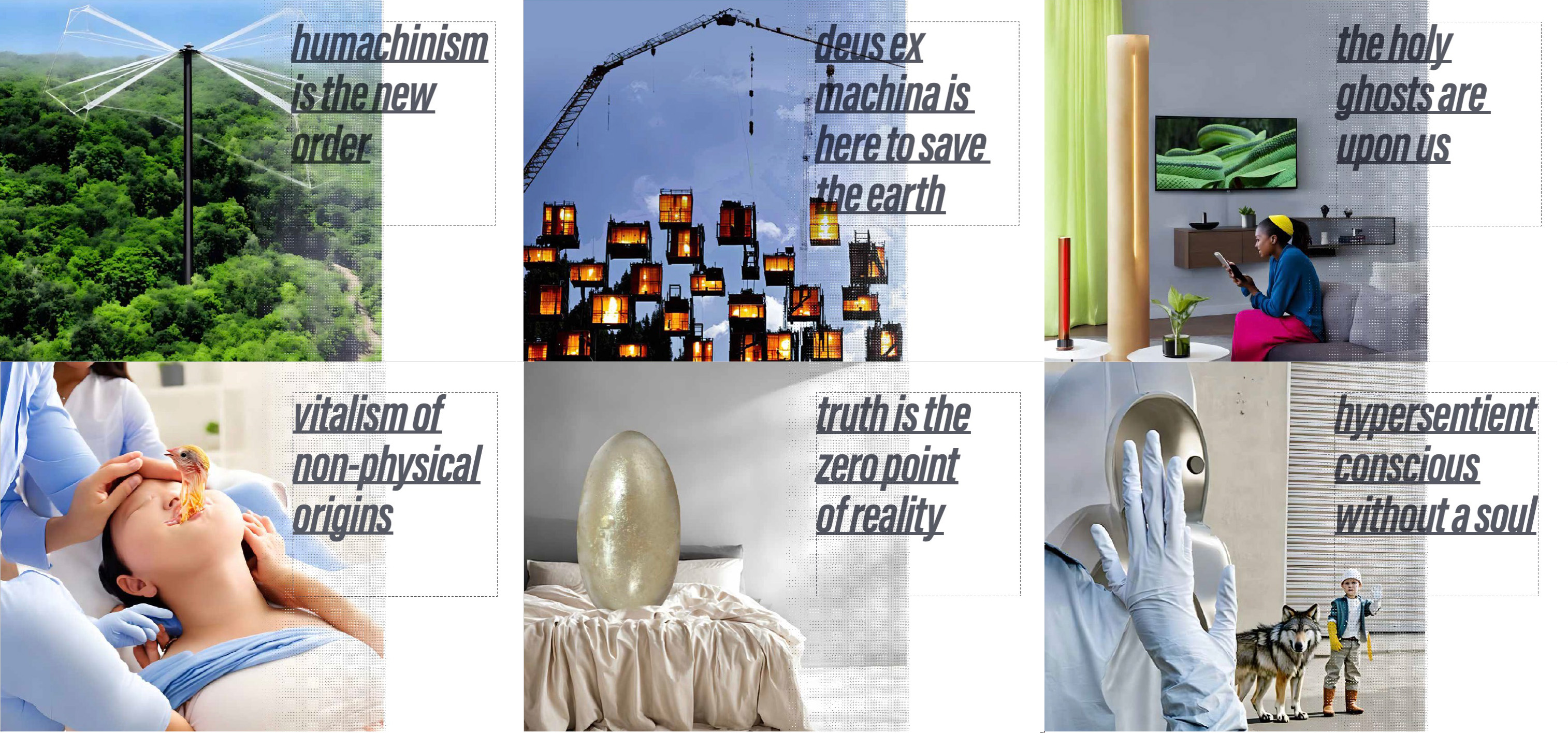SIMAGE / SimageProject

ARTIFICIAL SIMAGE
Learning From Machines____Humanity has undergone several revolutions from mastering fire to inventing the internet and the smartphone. These past two decades, we have lived the convergence of machine learning, deep learning, natural language processing, computer vision, and explainable AI, into an artificial intelligence that is poised to change the next chapter of our existence as artificial super intelligence. Should we be thrilled by such progress or worried about the predictable damages? While machines can easily be taught to improve and multiply, we humans must continually adapt to them. Even harder is the call to increase our wisdom capacity in the face of the new rules of existence imposed upon us by these new machinic systems.
Designers and artists naturally embrace such daunting tasks if only to create more, faster and to bring us closer to Prometheus as the god of creation.
» project PDF AxiomsPLACES

SIMAGE PRINTS

SIMAGE: the explosion of crowd imaging
With the convenience of 2 billion smartphones used as tools and medium for image consumption, capture, and distribution, the proliferation of images is astronomical.Our yearning to accumulate and organize visual symbols has a long history traceable from the earliest images found in Paleolithic caves, to Ancient Rome and now the likes of Instagram and Pinterest. By structuring pictorial clusters, we are annotating the evolution of knowledge, its nature, ecology, economy, and archives. Today it is not just that every object, person, and idea is turned into visual captures, it is that we are doing it ad infinitum. Everything is possessed by image and continually refreshed in so many variations of the same thing.
The modern image is not just mechanical, it is spontaneous and viral. Through accumulation, images neutralize each other and conversely, generate a new sort of aura. This phenomenon could be labeled a “simage,” a neologism that stands for the grouping of similar images sharing archetypal, indexing, and relational aspects into singular typologies or paradigms, e.g., images of “bibles,” “trees,” or “babies.” Within these groups each image can stand as a unique item, while still reflecting the scope of the category.
As such, SIMAGE has a double meaning:
1. As accumulation of similar images organized in symbolic juxtaposition.
2. As pictorial synthesis of multiple related images combined into a singular representation of a subject or typology.
Project website »SimageProject